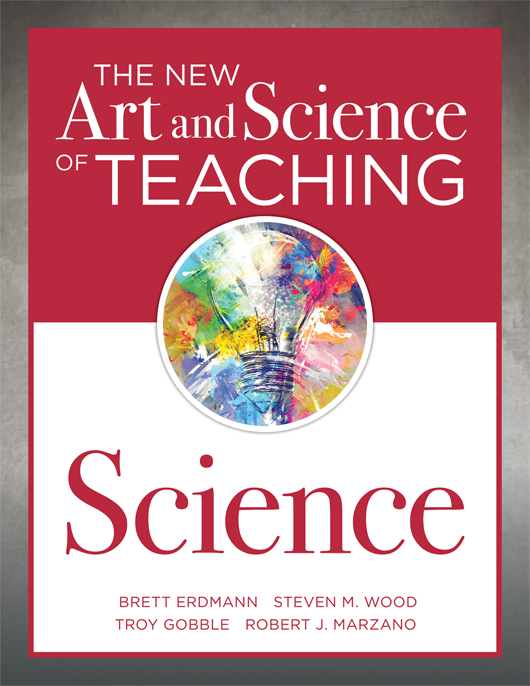Free Reproducibles
The New Art and Science of Teaching Science
This essential resource supports teachers by providing research-based ideas, strategies, and activities to enhance teaching and promote student learning and achievement in science.
Benefits
- Understand the New Art and Science of Teaching model as it applies to science instruction.
- Learn to engage and motivate students through a wide variety of instructional strategies.
- Better utilize formal and informal assessments.
- Improve the organization and layout of the classroom to facilitate student growth.
- Understand how to implement the various guiding questions for curriculum design to best plan classroom strategies.
TABLE OF CONTENTS
Part I: Feedback
Chapter 1: Providing and Communicating Clear Learning Goals
Chapter 2: Using Assessments
Part II: Content
Chapter 3: Conducting Direct Instruction Lessons
Chapter 4: Conducting Practicing and Deepening Lessons
Chapter 5: Conducting Knowledge Application Lessons
Chapter 6: Using Strategies That Appear in All Types of Lessons
Part III: Context
Chapter 7: Using Engagement Strategies
Chapter 8: Implementing Rules and Procedures and Building Relationships
Chapter 9: Developing Expertise
Afterword
Appendix A: The New Art and Science of Teaching Framework Overview
Appendix B: List of Figures and Tables
PRINTABLE REPRODUCIBLES
- Confidence Levels Progress Chart
- Claim, Evidence, and Reasoning Chart
- Scaled Target for Constructing Scientific Explanations
- Student Survey
- Self-Audit for The New Art and Science of Teaching Framework
SUGGESTED RESOURCES
BOOKS
- Cooper, D. (2022). Rebooting assessment: A practical guide for balancing conversations, performances, and products. Bloomington, IN: Solution Tree Press.
- Glass, K. T., & Marzano, R. J. (2018). The new art and science of teaching writing. Bloomington, IN: Solution Tree Press.
- Marzano, R. J. (2010). Developing expert teachers. In R. J. Marzano (Ed.), On excellence in teaching (pp. 213–246). Bloomington, IN: Solution Tree Press.
- Marzano, R. J. (2016). Direct instruction lessons: Processing content. Bloomington, IN: Marzano Resources.
- Marzano, R. J. (2017). The new art and science of teaching. Bloomington, IN: Solution Tree Press.
- Marzano, R. J., & Eaker, R. (Eds.; 2020). Professional Learning Communities at Work® and High-Reliability Schools™: Cultures of continuous learning. Bloomington, IN: Solution Tree Press.
- Marzano, R. J., Pickering, D. J., & Heflebower, T. (2011). The highly engaged classroom. Bloomington, IN: Marzano Resources.
- Marzano, R. J., Yanoski, D. C., & Paynter, D. E. (2016). Proficiency scales for the new science standards: A framework for science instruction and assessment. Bloomington, IN: Marzano Resources.
- Reibel, A. R., & Twadell, E. (Eds.). (2019). Proficiency-based grading in the content areas: Insights and key questions for secondary schools. Bloomington, IN: Solution Tree Press.
- Wiliam, D. (2018). Embedded formative assessment (2nd ed.). Bloomington, IN: Solution Tree Press.
WEBSITES

